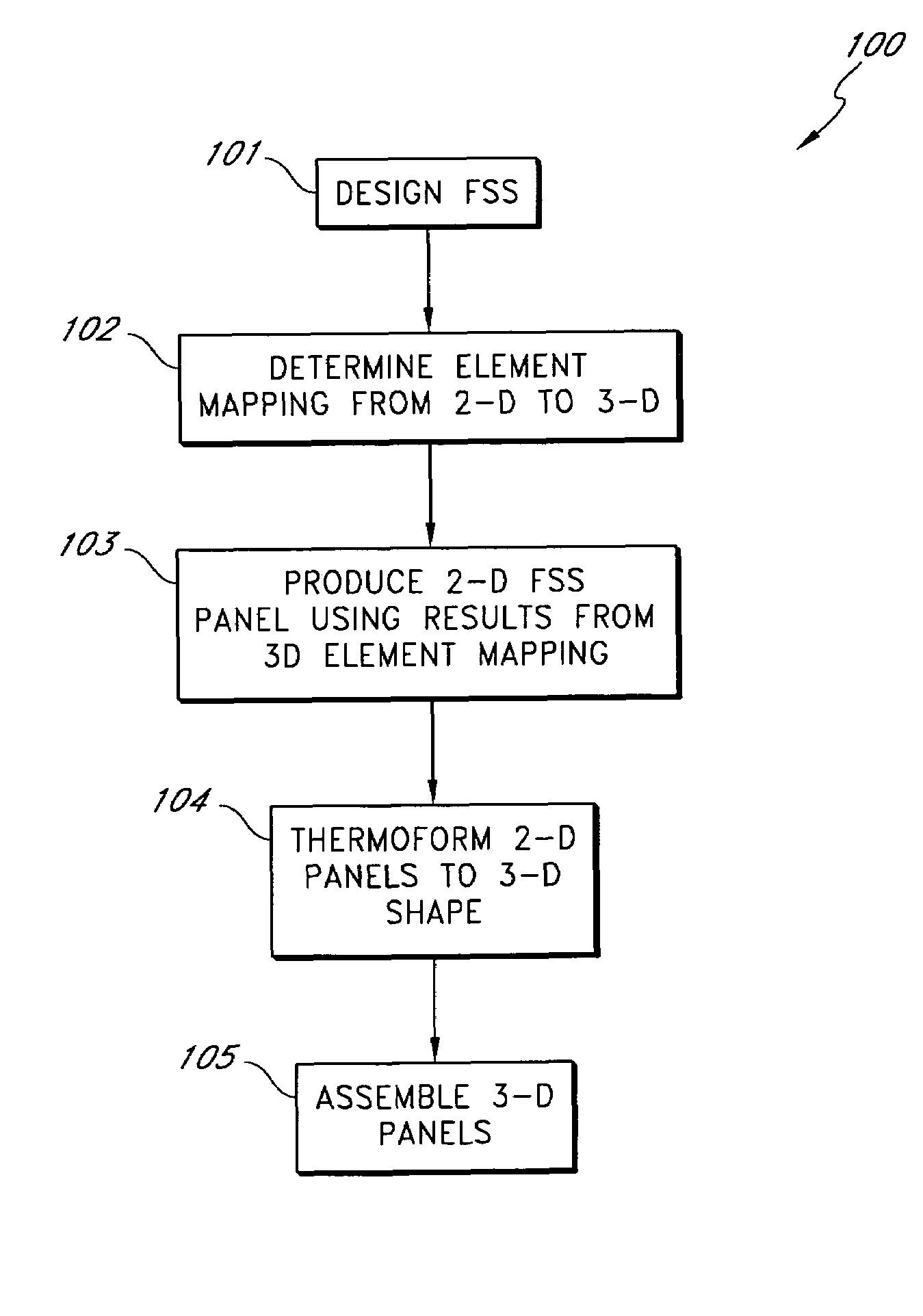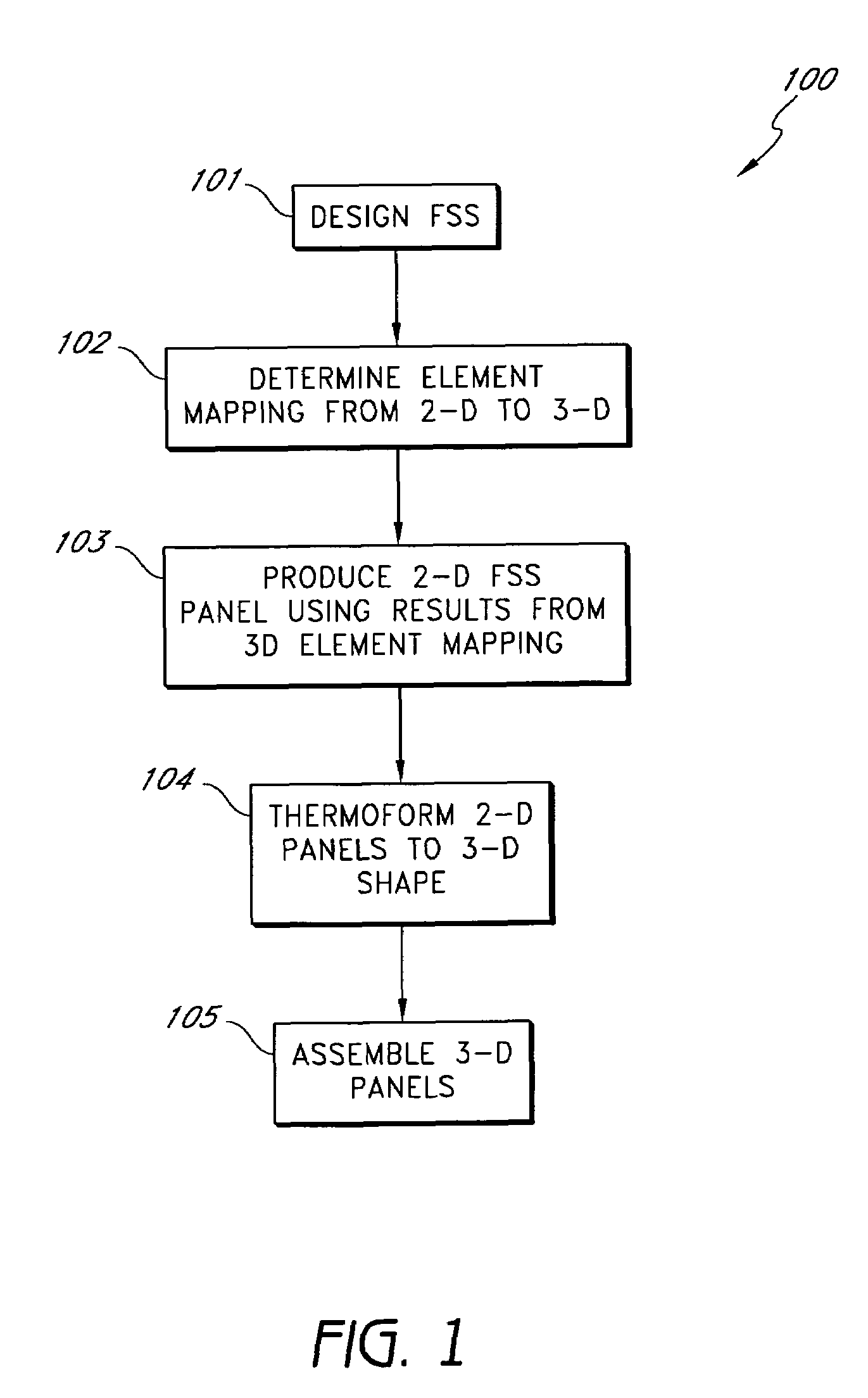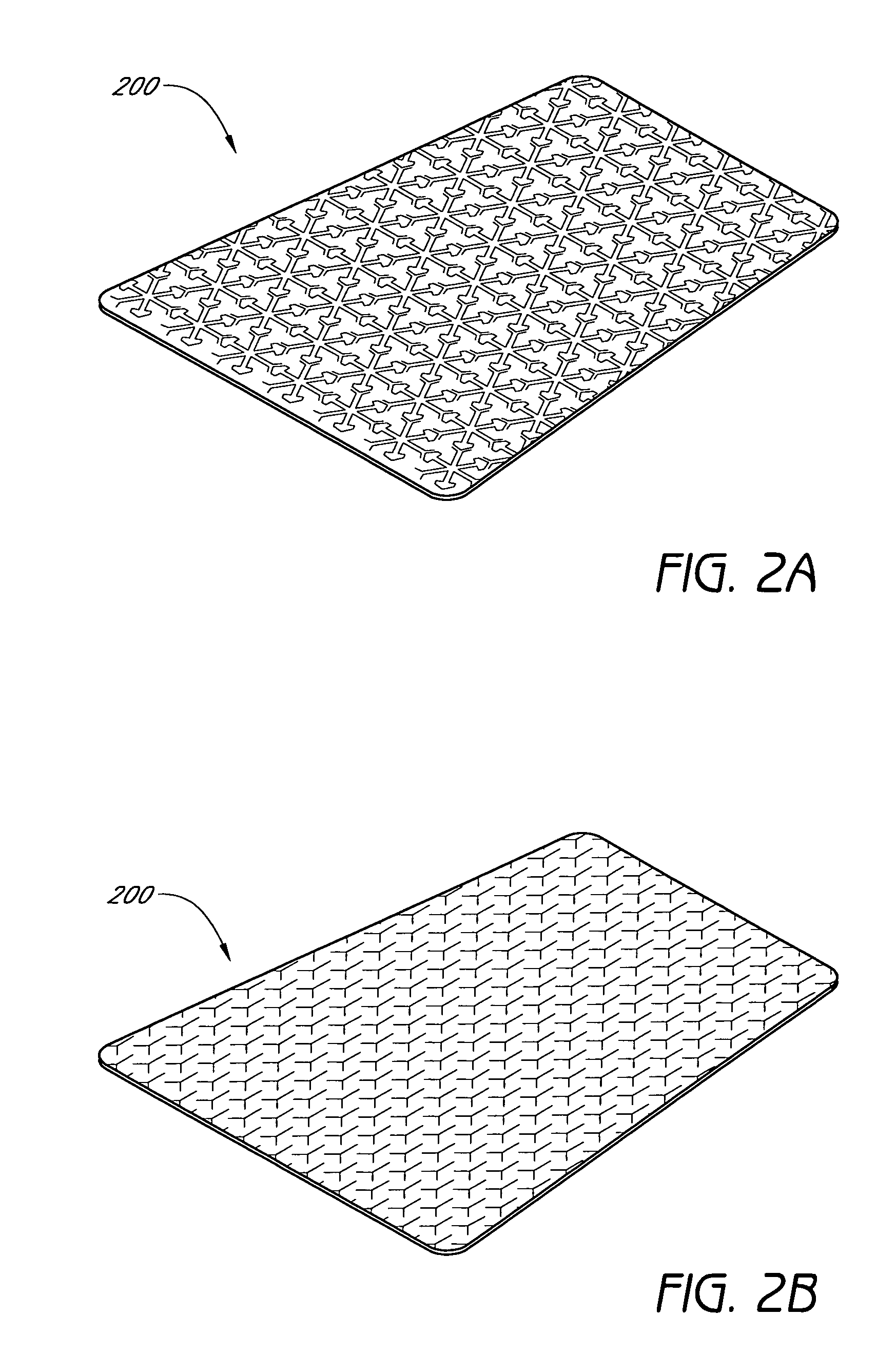Thermoformed frequency selective surface
a frequency selective surface and thermoforming technology, applied in the direction of flexible aerials, resonant antennas, collapsible antenna means, etc., can solve the problems of difficult fabrication, complicated pattern, and no known method for patterning curved surfaces to achieve precise frequency selectivity, etc., to facilitate the mapping of fss from two-dimensional geometry into three-dimensional geometry, the effect of less cost and more accura
- Summary
- Abstract
- Description
- Claims
- Application Information
AI Technical Summary
Benefits of technology
Problems solved by technology
Method used
Image
Examples
Embodiment Construction
[0015]FIG. 1 is a flowchart showing a 3-D FSS design and fabrication process 100. In a first process block 101, a FSS structure is designed. Typically, the design programs and techniques used in the process block 101 assume the FSS is flat or that the radius of curvature of the FSS is relatively large with respect to the wavelength of a desired operational band of the FSS. The resulting design for a typical radome or other FSS structure includes the number of layers, the dielectric constant of the materials used in and around the FSS layers, the shape of the FSS elements in each layer and the spacing between FSS elements in each layer. Although not required, it is typical that the FSS elements are uniformly spaced on each FSS layer. Even when uniform spacing is not used, the spacing between elements affects the operational properties of the FSS and it is generally desirable to be able to control the element spacing during construction of the FSS layers. If the final FSS layers are t...
PUM
 Login to View More
Login to View More Abstract
Description
Claims
Application Information
 Login to View More
Login to View More - R&D
- Intellectual Property
- Life Sciences
- Materials
- Tech Scout
- Unparalleled Data Quality
- Higher Quality Content
- 60% Fewer Hallucinations
Browse by: Latest US Patents, China's latest patents, Technical Efficacy Thesaurus, Application Domain, Technology Topic, Popular Technical Reports.
© 2025 PatSnap. All rights reserved.Legal|Privacy policy|Modern Slavery Act Transparency Statement|Sitemap|About US| Contact US: help@patsnap.com



